Robert Fagan
Paintings
Double portrait of Sir Andrew Corbet Corbet and his wife Hestor
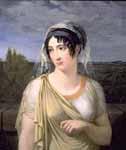
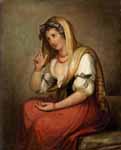
Portrait of Lady Emma Hamilton as Neapolitan Peasant
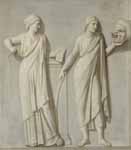
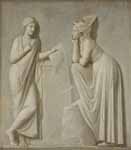
The Muses: Euterpe and Melpomene
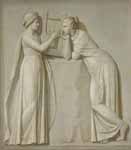
The Muses: Terpsichore and Polyhymnia
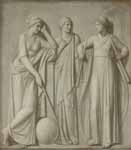
The Muses: Urania, Erato and Calliope
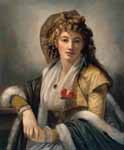
Anna Maria Ferri, the Artist's First Wife
Robert Fagan (c. 1761 – 26 August 1816) was a painter, diplomat and archaeologist. Born in London, he spent most of his career in Rome and Sicily.
Career
The son of Cork immigrants, Fagan was born ca. 1761 in London.
He arrived in Rome in 1781. Like other artists in Rome he became involved in dealing in antiquities, and, with the financial backing of some British patrons, carried out several archeological digs. In 1792 he excavated at Vigna San Sebastiano on Via Appia, financed by Corbet Corbet (whose portrait he painted that year). In 1793 the visiting British Prince Augustus Frederick secured permission from the Pope for Fagan to export antiquities.As an archaeologist he was involved in the excavations near Laurentum, which resulted in the discovery of the Venus, now at the Capitoline. As an artist, he made a career out of painting portraits, often for traveling British families. He was married twice, first to Anna Marie Ferri and then to Maria Ludovica’ Flajani a young Italian girl whom he married in 1801, just six months after his first wife's death.[1]
Following the Napoleonic occupation of Rome Fagan fled to Naples in 1797, but after a brief stay in Florence he returned to Rome and managed to despatch to Britain paintings by Claude and Moroni and other possessions to Naples. In 1807 he moved to Sicily. In 1809, following his daughter's marriage to William Baker, Fagan was made British Consul general in Sicily.[2] That year he began digging at Selinunte, and in 1812 at Tyndaris.
Fagan fell into debt, and committed suicide in Rome by jumping from a window.[3][4] After his death his young widow sold to the Vatican museums the antiquities which he had excavated.
His grandson Louis Alexander Fagan was a noted engraver and writer.[5]
References
[1] Fagan at Ricorso
Aspects of Irish Art. National Gallery of Ireland. Cahill & Co. 1974. Pg 108. Retrieved 18 Mar. 2008.
Art 4 a Day at the Wayback Machine (archived 9 August 2009). 14 July 2004. Retrieved 13 May 2008.
Obituary in Gentleman's Magazine (1816 October), p.177
Louis A. Fagan, List of donors, British Museum, accessed June 2010
Further reading
I. Bignamini, C. Hornsby, Digging And Dealing In Eighteenth-Century Rome (2010), p. 266-268
A Dictionary of British and Irish Travellers in Italy, 1701-1800, Compiled from the Brinsley Ford Archive by John Ingamells (1997)
R. Trevelyan, 'Robert Fagan un inglese in Sicilia', in Kalos (1993 December), p. 6-15
R. Trevelyan, 'An Irish Bohemian in Italy', in Apollo; 96 (1972 October), p. 298-331
---
Fine Art Prints | Greeting Cards | Phone Cases | Lifestyle | Face Masks | Men's , Women' Apparel | Home Decor | jigsaw puzzles | Notebooks | Tapestries | ...
---
Artist
A - B - C - D - E - F - G - H - I - J - K - L - M -
N - O - P - Q - R - S - T - U - V - W - X - Y - Z
Retrieved from "http://en.wikipedia.org/"
All text is available under the terms of the GNU Free Documentation License



